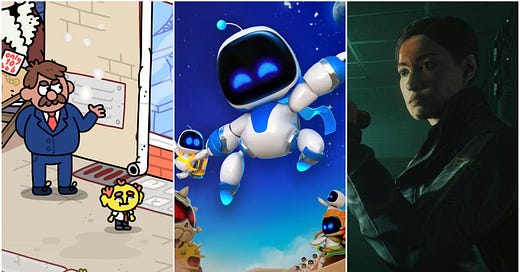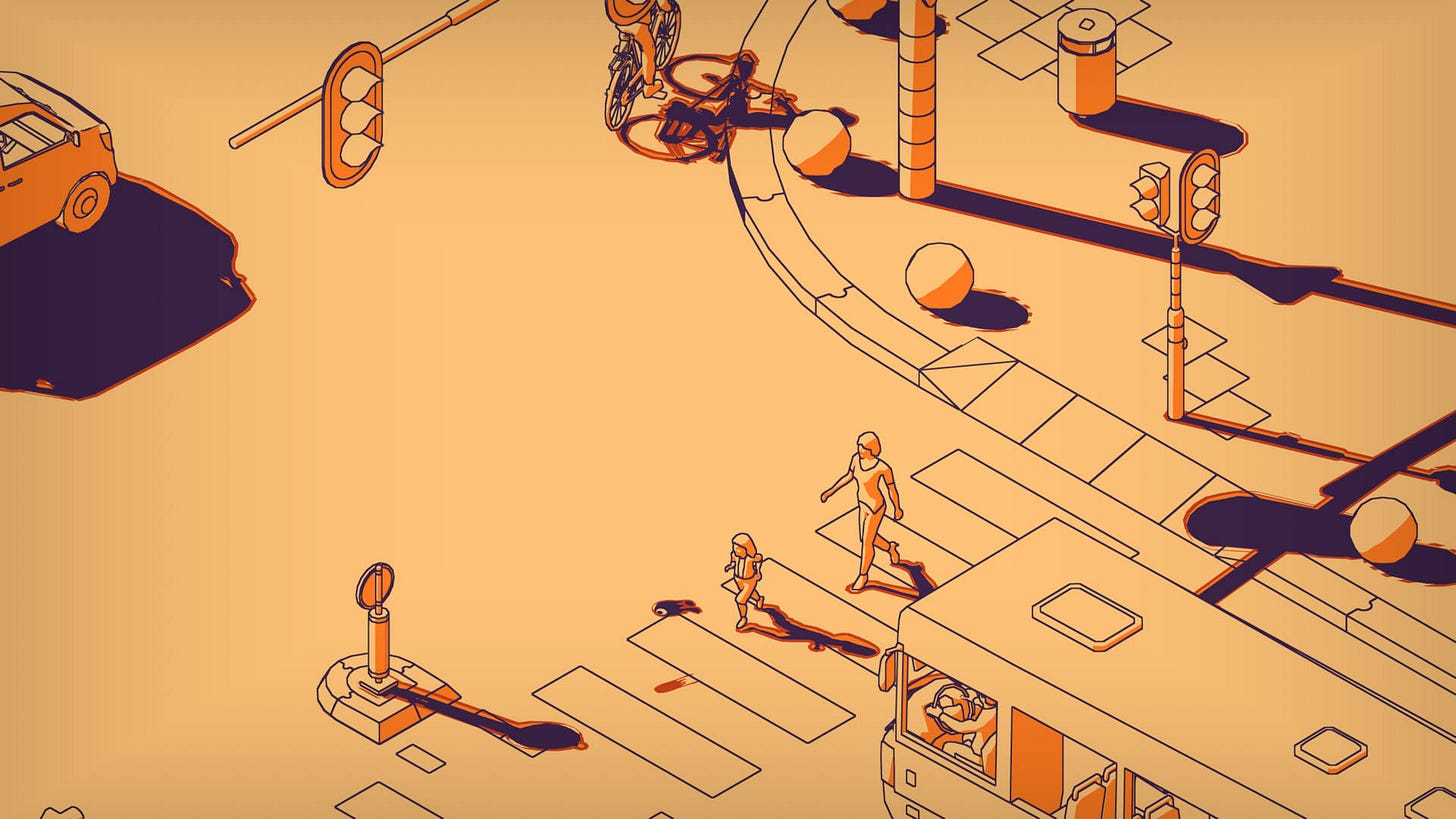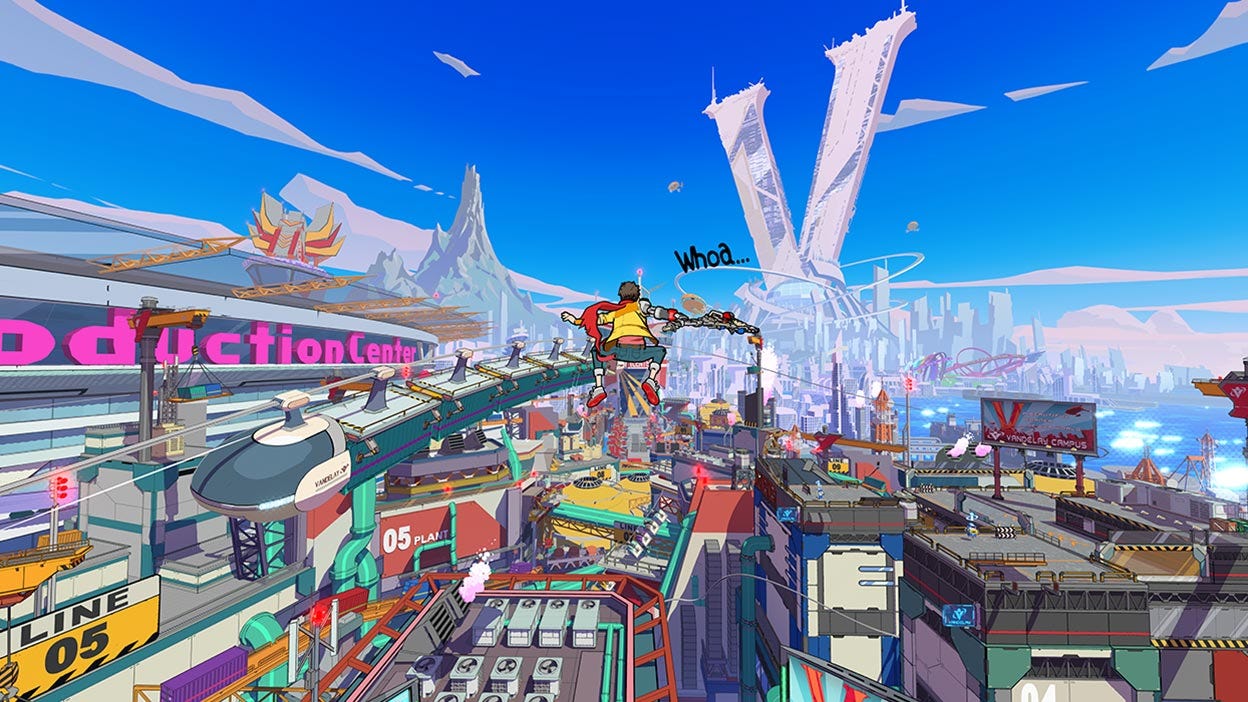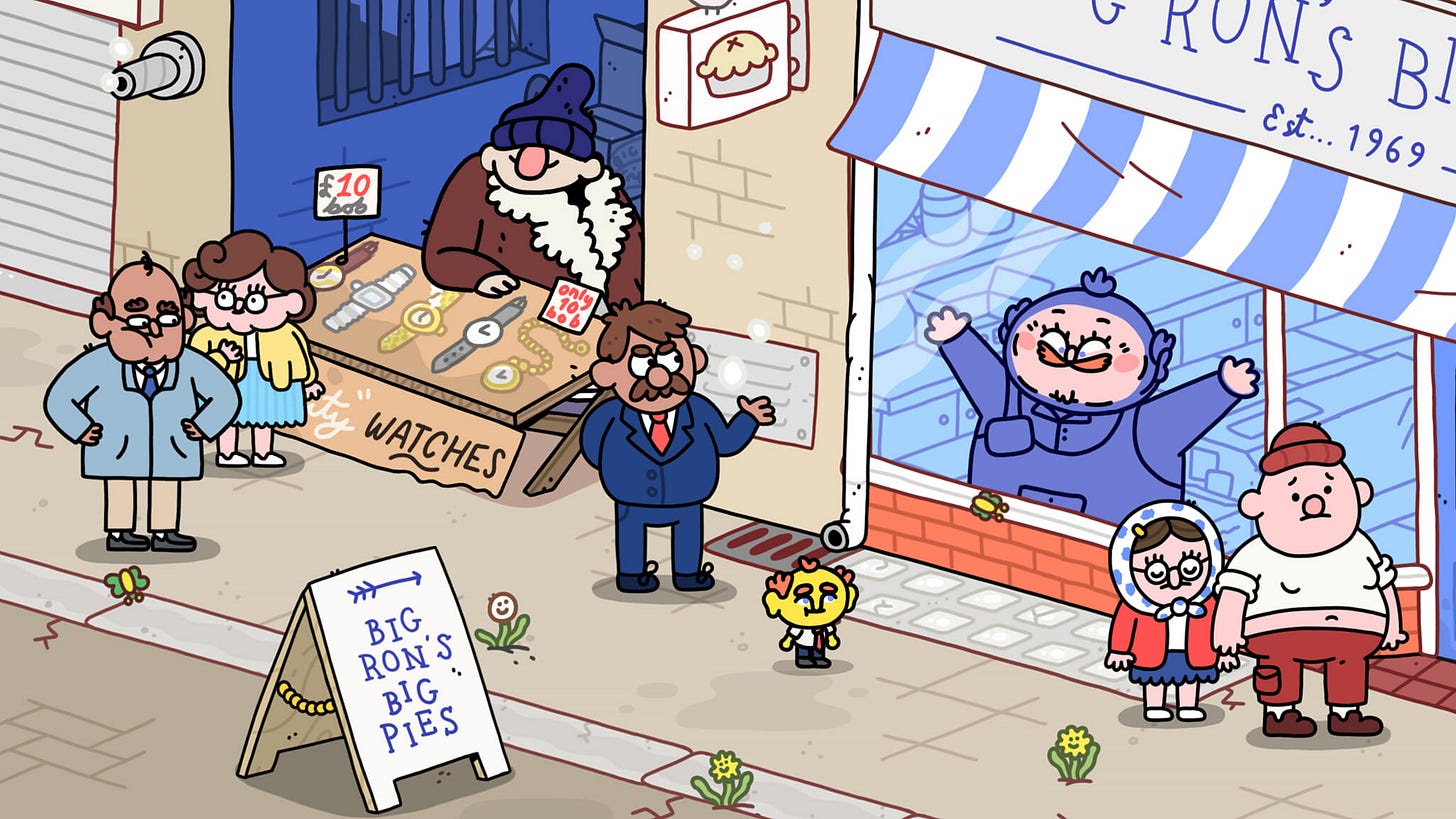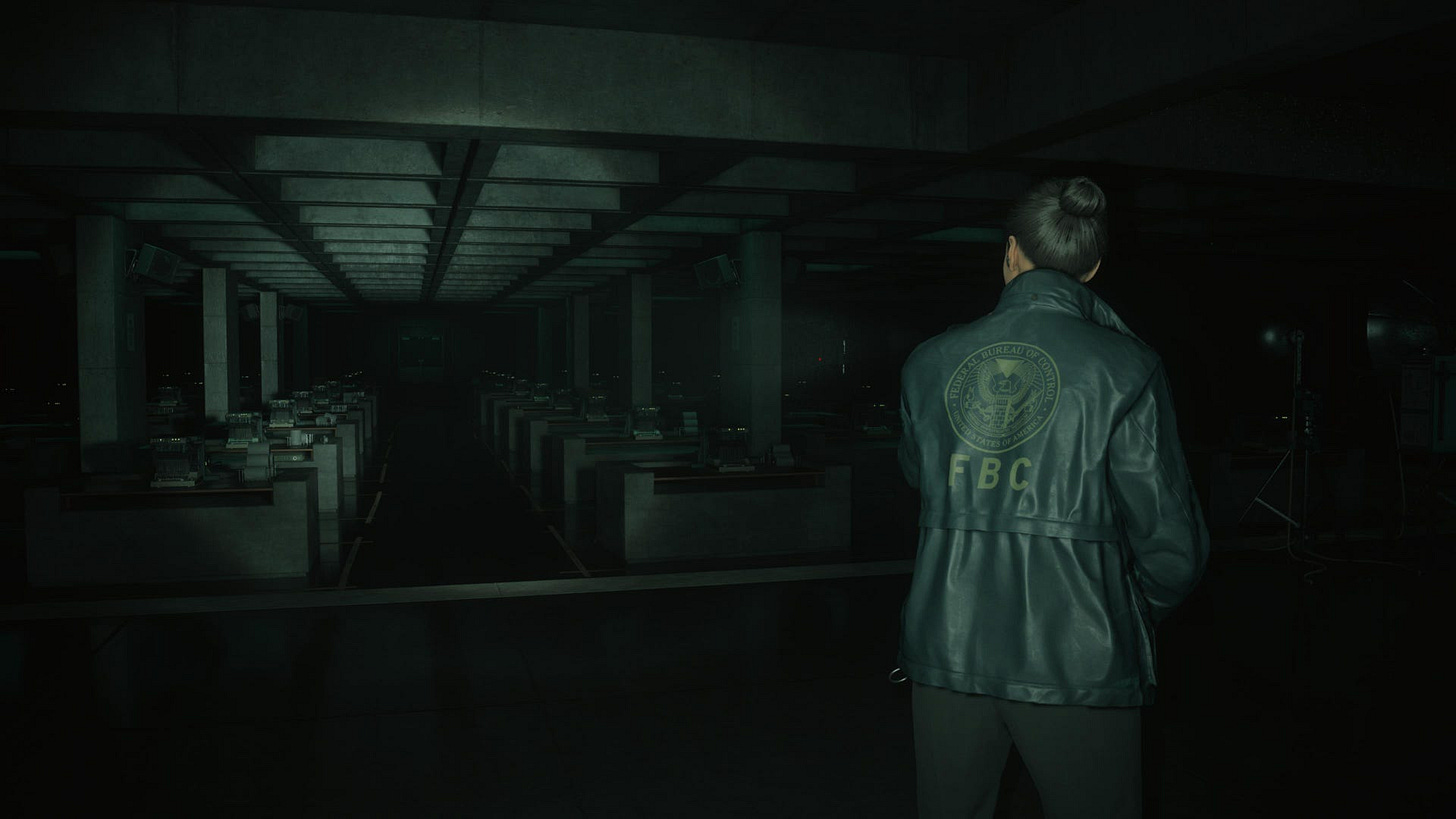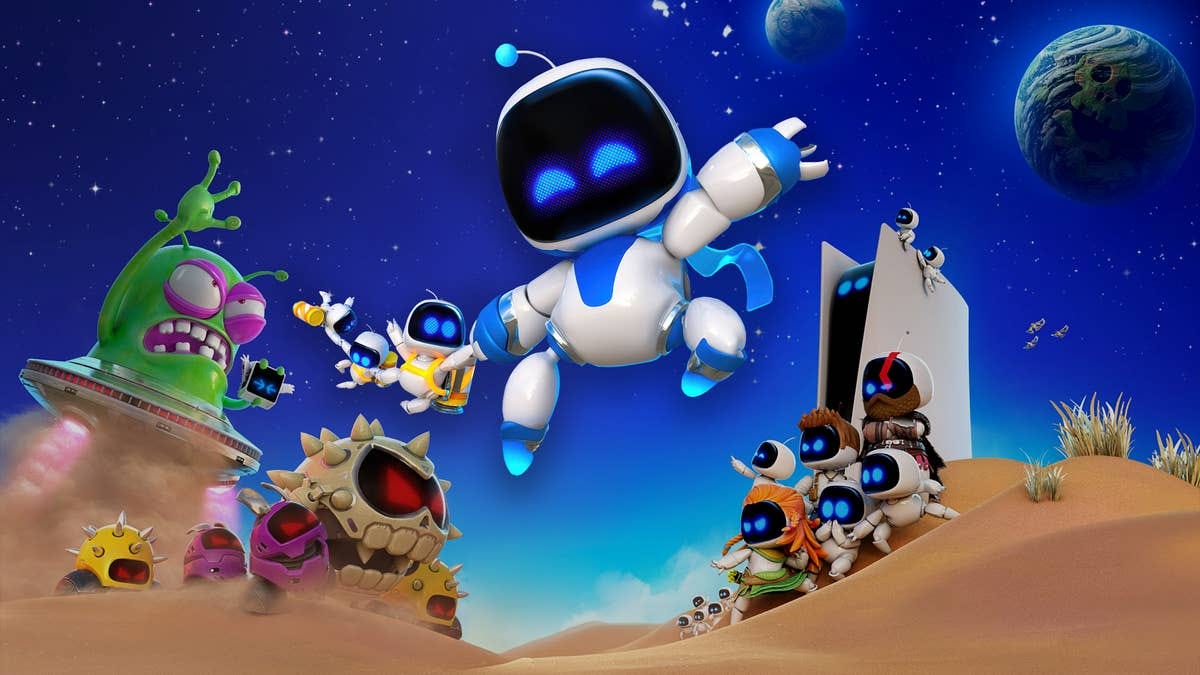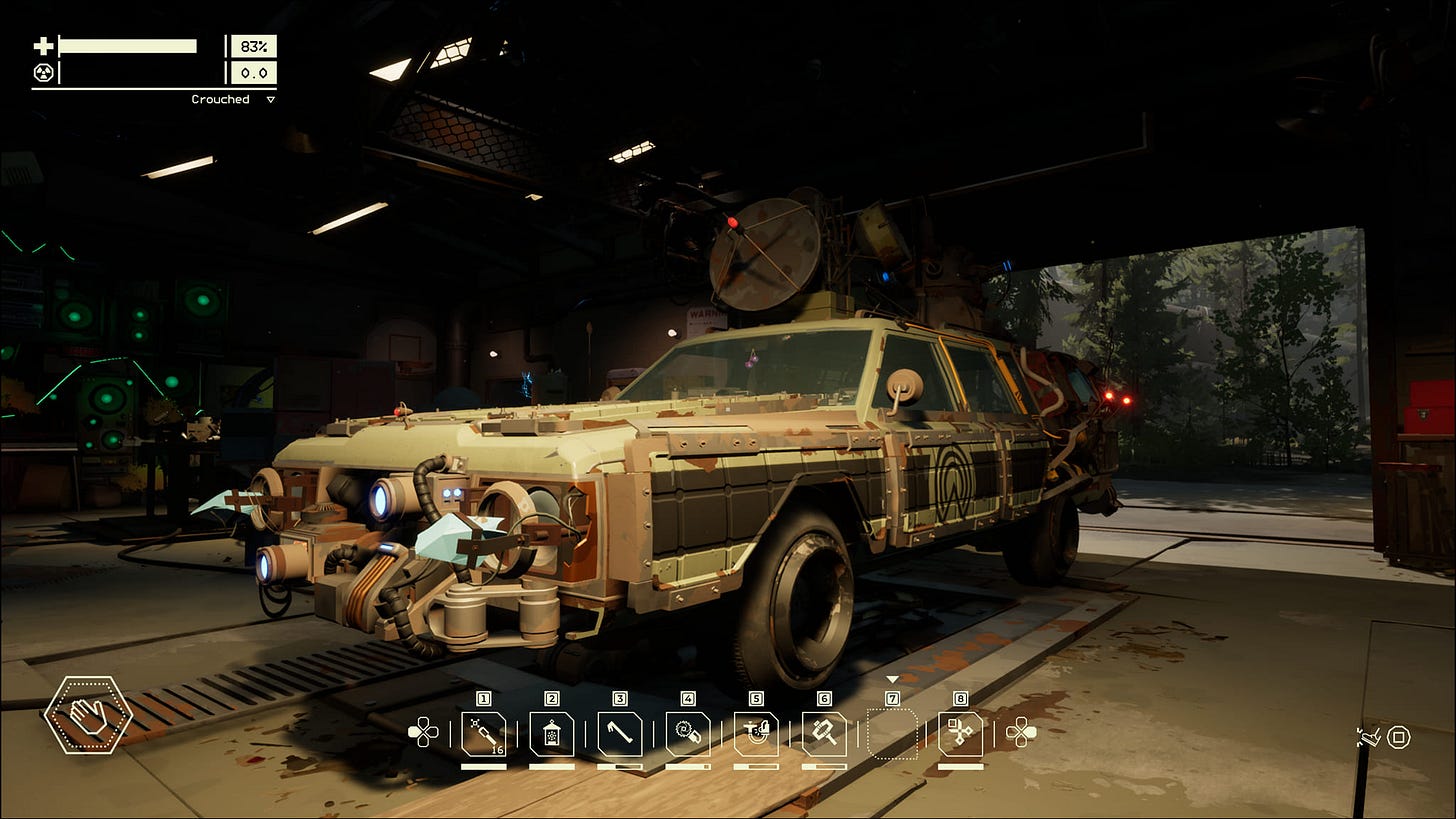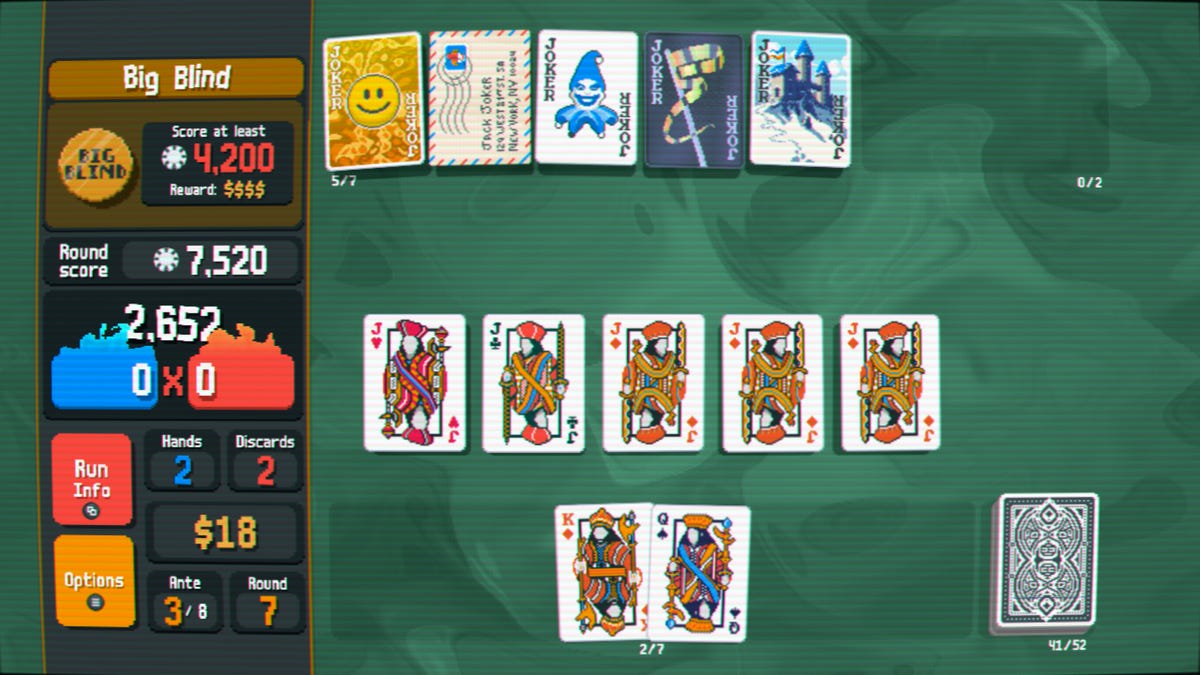Let me be honest: I didn’t expect to be writing one of these in 2024.
As I’ve written about a few times this year, I’ve found writing somewhat difficult (and yes, I’m aware of the irony in writing about writer’s block). But over the last couple of weeks, thanks to many wonderful people in my life looking out for me — including friends, family, a therapist and a GP who prescribed me antidepressants — some of the brain fog is starting to lift.
It’s helping me look more clearly at the future, but it’s also helped me more closely examine the past year. And as I looked back on 2024 I thought: “Wow, I played a lot of video games this year. Some really good ones, too.” So I decided to write about them. Hopefully you’ll enjoy reading about them too.
One more thing — a few of the games on this list technically came out in previous years. But because they weren’t released on the PS5 (my gaming system of choice) until this year, I decided that was enough justification to include them on this list. If you want to fight about that, I’ll see you behind the bike sheds after school.
10. SCHiM
When I was a kid, stuck in the back of the car on a long journey, I used to make up games with the scenery going by the window. I would make my fingers leap from rooftop to rooftop, or imagine myself jumping over trains as they sped past, or hopping between small patches of grass on the side of the road. Somehow, Dutch developers Ewoud van der Werf and Nils Slijkerman were able to reach inside my head, pluck out that experience and turn it into a game called SCHiM.
In SCHiM, you play as a little creature that looks like a cross between a frog and the soot sprites in Spirited Away. Armed with nothing but a jump button, you leap from shadow to shadow in order to make your way across a city and be reunited with your “owner”, a human who’s been having a streak of bad luck since you and he came to be separated.
SCHiM is certainly not the most complex game I’ve played in 2024, but it’s amazing to see just how much mileage the developers managed to squeeze out of a neat concept and a gorgeous, monochromatic art style. It’s a great idea, executed beautifully, and sometimes that’s enough.
9. Tales of Kenzera: Zau
I almost didn’t put Tales of Kenzera: Zau on this list, because the truth is it just wasn’t very fun to play a lot of the time. It was a perfectly cromulent metroidvania, but it was often let down by fiddly platforming sequences and combat encounters that nearly had me snapping my controller in half in frustration.
And yet, I kept coming back to it because it did some interesting things that I’ve never seen a video game do before. The story (which sees a young warrior search for three spirits to appease the God of Death in exchange for the return of his late father), is heavily inspired by Bantu mythology, and nestled within a framing device that takes place in a brilliantly vibrant Afrofuturist setting. Games that explore death aren’t exactly rare, but it’s clear that director Abubakar Salim is drawing on some deeply personal experiences, and this game’s exploration of the intricacies of grief feels both nuanced and utterly believable.
While Tales of Kenzera: Zau wasn’t exactly my cup of tea, I’m very glad that it exists, and I look forward to seeing what Salim and the rest of the team at Surgent Studios do next.
8. Animal Well
Over the last few years we’ve seen the emergence of an exciting new genre of video game: titles like Outer Wilds, Heaven’s Vault or Return of the Obra Dinn, where the chief marker of progress isn’t levelling up or gaining new skills but acquiring knowledge. Whatever you call the genre — “detective games” or (ugh) “metroidbrania” — Billy Basso’s Animal Well feels like the new high watermark.
Unlike those aforementioned titles, Animal Well is abstract to a fault. You play as a tiny pink blob who wakes up in a flower in a mysterious subterranean world, and are basically left to figure out what the hell is going on and where to go from there. It’s a surreal and often terrifying space (the less said about that goddamn ostrich, the better), but the exhilarating thrill that comes with discovering a hidden game mechanic or finding the solution to a puzzle does much to dispel the gloom.
Despite finishing what many would consider to be the core of Animal Well, I know full well that I’ve barely uncovered a fraction of its secrets. Some puzzles can only be solved by working collaboratively with other players. Others (according to the developer) might not be solvable for another decade. Maybe I’ll return to the game in the future. For now, though, I’m content to leave a little bit of mystery in the world.
7. Hi-Fi Rush
One of my all-time favourite movie scenes is the opening of Baby Driver: a daring bank heist and getaway chase, meticulously choreographed in time with the song “Bellbottoms” by The Jon Spencer Blues Explosion. Hi-Fi Rush feels like a 14-year-old watched that scene on repeat while eating their body weight in sugar and thought: “What if there was a whole video game like that?!”
Combining hack-n-slash gameplay with rhythm mechanics is an absolute stroke of genius. It’s easy enough to learn the basics, with plenty of nice, accessible visual cues onscreen to help keep your attacks on the beat, and few things are as viscerally satisfying as pulling off a perfect combo while Nine Inch Nails plays in the background. It helps that every part of the presentation is bursting with personality and charm, from the vibrant comic book visuals that pulse with the music, to the genuinely funny writing of the central cast of characters.
But the sugar rush comes with a bitter aftertaste. A few weeks before I started playing Hi-Fi Rush its developer, Tango Gameworks, became one of many, many studios this year to face an unceremonious closure. In that context, the game's story — in which a ragtag team of passionate artists takes on an industry that makes short-sighted decisions in order to increase profits for shareholders and executives — feels downright prophetic.
6. Pentiment
I knew I had to play Pentiment as soon as I got a look at its utterly unique art style. Set in 16th-century Bavaria, the game looks like an illuminated manuscript come to life. Art and writing are deep in its bones: you can discern a character’s social standing or even their mood based on the font used to present their dialogue onscreen. But what truly hooked me by the end was the story.
Though Pentiment takes place in a time of massive political upheaval — as it starts, Martin Luther’s 95 Theses are hot off the printing presses and the German Peasants’ War is looming on the horizon — its scope is refreshingly limited. The fictional village of Tassing and the nearby abbey are small, but filled with a host of vibrant characters. Over the course of the game you’ll come to know them intimately… which makes things all the more difficult when bodies start piling up and you have to start pointing fingers.
What’s most fascinating about Pentiment is its refusal to provide a clear answer about any of the murders it has you solve. You can gather as much evidence as you like, but you’ll never know for certain whether your accusation was correct. “You’ve made your choice,” the game seems to say, “and now you — and everyone else in Tassing — have to live with it.”
5. Thank Goodness You’re Here!
Comedy in video games is a very hard thing to get right. Good timing is one of the most important parts of any joke, but video games are an interactive medium; giving agency to the player means losing control of that crucial element.
Thankfully, the small team of developers at Coal Supper are comedic geniuses. I started laughing at Thank Goodness You're Here! before I'd even gotten out of the start menu (which was all written in a thick Yorkshire dialect) and basically didn't stop for the three-or-so hours it took to reach the credits. Granted, the other thing that everybody knows about comedy is that it’s subjective. Coal Supper’s sense of humour (which sits somewhere at the intersection between Monty Python, Wallace & Gromit and an Adult Swim cartoon) won’t be to everyone’s taste, but it’s so far up my street we’re practically neighbours.
Even if I didn’t find the game side-splittingly funny I’d still respect the developers for deciding to make a video game that appealed exclusively to them, rather than chasing trends or aiming for the lowest common denominator. The town of Barnsworth and its inhabitants are all undeniably odd, but everything on display has been made with a palpable sense of love. It’s just reyt good.
4. Alan Wake II: The Lake House
Alan Wake II was my favourite game of 2023, and this year Remedy Entertainment were kind enough to give me two more reasons to return to Bright Falls and the Dark Place. The first — Night Springs — was a fun-but-throwaway triptych of bitesize stories, but they really pulled out all the stops with the second.
The Lake House sees Remedy tie the plot of Alan Wake II more closely with that of their brilliant 2019 game Control, and it’s a treat to see how they combine the eldritch horror of the former with the New Weird-ness of the latter. No-nonsense Federal Bureau of Control agent Kiran Estevez (who had a minor role in the base game) makes a great protagonist, too; when monsters start coming out of the walls, her only reaction is to sigh like the printer’s out of toner again.
What’s most surprising is that, like the base game, The Lake House also has a lot to say about art and the people who create it. The story’s most arresting image — a cavernous room filled with automated typewriters, clacking away in the vain attempt to create fiction — is the perfect visual metaphor for the kind of hacks who think that using programmes like Chat-GPT to regurgitate a bunch of plagiarised slop makes them artists.
3. Astro Bot
There’s a cynical part of me which understands that Astro Bot is, when all is said and done, corporate propaganda. It’s an interactive advert: a highlight reel of 30 years of PlayStation history and an all-singin’, all-dancin’ showcase of what their most recent console is capable of. Intellectually, I know this. And yet every time I sat down to play the game, that small cynical part of me was overtaken by an all-consuming flood of pure joy.
Yes, it’s a museum of PlayStation’s history. But it’s also my history. I’ve been playing video games for nearly a quarter of a century, ever since my brother and I got a PSOne for Christmas in 2000. It was impossible not to feel the warm glow of nostalgia at a cheeky reference to Ōkami, or the adorable sight of a tiny robot Nathan Drake flying on a spaceship shaped like a PS3.
But even without the crutch of familiarity, Astro Bot would still be a triumph purely on a technical level. It’s an exquisitely crafted 3D platformer, with a wonderfully intuitive control system. More importantly, every single level (and there are a lot of them) is bursting with new ideas. One minute you’re a sponge, growing to the size of a kaiju as you soak up water; the next, you’re stopping time with an alarm clock or shooting upwards with the help of a chicken-shaped jetpack.
In a year where my mental health has taken a few hard knocks, everything about Astro Bot made me deliriously happy. And for that, I am eternally grateful.
2. Pacific Drive
I’ve never been a fan of survival games. The idea of roaming an area to find resources which you can use to craft items which help you find more resources really isn’t an appealing one to me. And yet something about Pacific Drive drew me in.
Partly it was the setting. The Olympic Exclusion Zone is a beautiful, rugged wilderness full of unexpected oddities: mannequins that suddenly appear out of nowhere like Doctor Who’s Weeping Angels, or strange plants that spit corrosive acid. Partly it was the characters: a collection of crackpots who felt fully three-dimensional despite only being disembodied voices heard over a radio. But mostly, it was the car.
The real star of Pacific Drive is a beat-up station wagon that may or may not be sentient, and the real genius of the game is that almost every gameplay loop involves fixing it up. Over the course of dozens of hours, I painstakingly transformed it from a battered old jalopy into an armoured laboratory on wheels, complete with a satellite dish on the roof and these awesome fins on the back that made it look like Ecto-1 from Ghostbusters. Sure, the lights dimmed whenever I hit the brakes and the horn honked when I shut the doors, but I adored that car.
(I called it Willie Nelson, because every time I looked at it I just couldn't wait to get on the road again.)
1. Balatro
I own three separate versions of Balatro — one for PS5, one for mobile, and one on my Steam account — and have easily spent at least 50 hours playing each. That is how firmly the game got its hooks into my brain this year. In fact, it’s hard remember a time before Balatro now. Like Tetris, it’s one of those rare video games so conceptually perfect that it feels like it’s always existed.
At the start, it’s incredibly easy to get to grips with. All you do is make poker hands from a normal deck of cards. Better hands score more points. Couldn’t be simpler. Then you start introducing the Jokers, which can increase your score multiplier by ridiculous amounts. Or the Planet cards, which give certain hands a higher score. Or Tarot cards that modify your deck. And just like that, the game has turned into one of near-infinite possibilities, where the sting of a failed run is almost instantly replaced by the overwhelming urge to have just one more go…
The games industry is a mess right now; a bubble bursting in slow motion that’s destroying countless careers. But if something like Balatro — a game made with love and passion by one single person — can take the world by storm, then maybe things aren’t as bleak as they seem.

